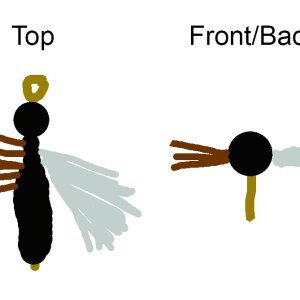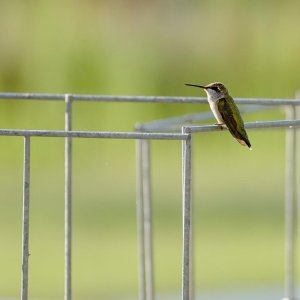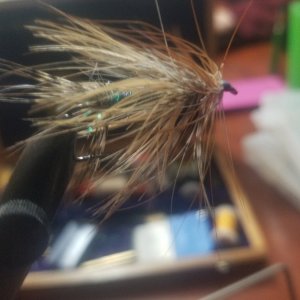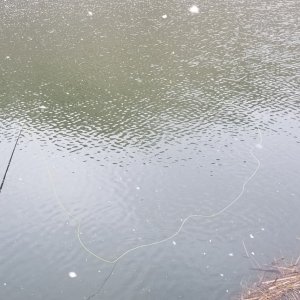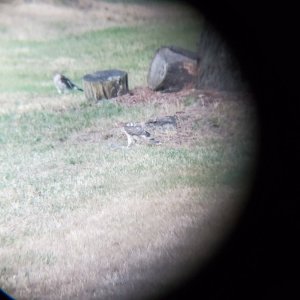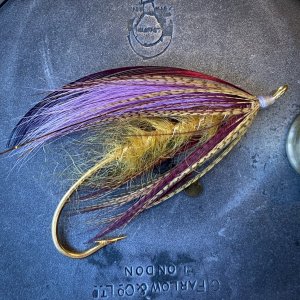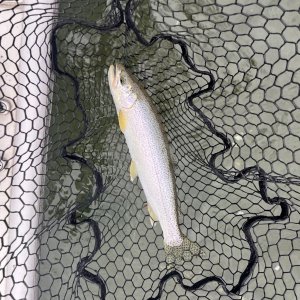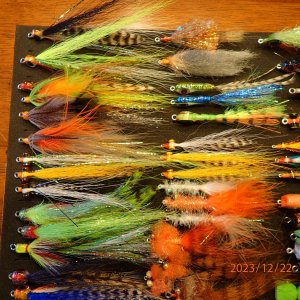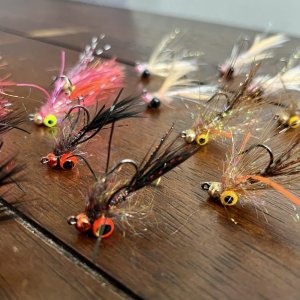What do people mean when they say "greased line techniques "?
You are using an out of date browser. It may not display this or other websites correctly.
You should upgrade or use an alternative browser.
You should upgrade or use an alternative browser.
Greased Line.?
- Thread starter Wetswinger
- Start date
Pink Nighty
Life of the Party
Historically that meant covering your silk fly line (sinking by nature) in some type of grease to make it float. Now I hear it used for basically all floating line steelhead fishing.
Interesting. I see it mentioned a lot in Spey articles..
Paige
Wishing I was fishing the Sauk
It also refers to casting at a certain angle and mending to present the fly broadside with a greased line.
Or not mending the fly, and casting at the right angle to lead the fly for a broadside presentation!
Interesting. I see it mentioned a lot in Spey articles..
Grease line is a tactic where the fly is presented on broadside. It's more like a dead drift presentation but it's a taut line, not tight line. The rod is manipulated in such a way as to not have the fly swing so much. Most of the time the cast is more up or direct across. An iron style fly is a good choice for this. I find it useful for drifting my fly past pockets or when it's really cold and fish aren't likely to chase a fly across that's moving quicker and they are in more of a slot zone rather than distributed in a broad classic style run. Think of it for all simplicity as a presentation that is between a dead drift and a wetfly swing. The term comes from the fact it's done with a floating line. A long rod and good but minimal mending is best as you can fish lighter and keep the fly down by not lifting it with too much mending.
Often, especially in summer, a fish will take as you tighten up at the end of your grease line portion of the presentation and the fly rises and begins it's swing towards your shore. Summer run with a caddis looking Spey or other is a classic and effective fly to use for this. I like to time the rise to right above where I think they live as it's my first reach at them. Then as I step through show them the more broadside drift style presentation as I work down.
Rob Allen
Life of the Party
Fly broadside to the fish
Fly without drag ( tight line but not drag)
Fly traveling if the surface film ( though can be adapted to deep presentations)
Fly traveling more downstream than accross ( I think this part is very overlooked)
A.H.E. Wood the developer of the tactic fished the Carrington beat of the river Spey on Scotland. He knew where the salmon held in each run. Unlike what we do Wood fished the lies, not the runs. This wasn't a searching method. It was a way for him to offer the fish a different targeted presentation. We search for fish. Wood knew where the fish were.
Fly without drag ( tight line but not drag)
Fly traveling if the surface film ( though can be adapted to deep presentations)
Fly traveling more downstream than accross ( I think this part is very overlooked)
A.H.E. Wood the developer of the tactic fished the Carrington beat of the river Spey on Scotland. He knew where the salmon held in each run. Unlike what we do Wood fished the lies, not the runs. This wasn't a searching method. It was a way for him to offer the fish a different targeted presentation. We search for fish. Wood knew where the fish were.
It's the same as a proper spoon presentation when gear fishing for steelhead. Casting angles, rod and line manipulations, and speed. Think the fly needs to be moving across the current at the same speed as it is drifting downstream. Note, it doesn't work in all types of water.
Rob posted the best description.
Broadside presesntation of the fly.
Drag free drift is a misnomer, by Wood and everyone else who has tried to explain it. The only way to present drag free is to cut the fly off the leader and toss it on the water to drift truly drag free. So there is drag with a greased line presentation, but the drag must not be greater than the drift, meaning the fly should move across the current more slowly than it moves in the downstream direction, which Rob mentions in his 4th line.
And greased line presentation is in the surface film. It is neither waking, skating, nor deeply sunk. The rising sunk fly that Chromers describes is a Leisenring Lift.
I think the upshot is that a lot of presentations are called greased line when they are not. I have a copy of Wood's book if you'd like to read it.
Broadside presesntation of the fly.
Drag free drift is a misnomer, by Wood and everyone else who has tried to explain it. The only way to present drag free is to cut the fly off the leader and toss it on the water to drift truly drag free. So there is drag with a greased line presentation, but the drag must not be greater than the drift, meaning the fly should move across the current more slowly than it moves in the downstream direction, which Rob mentions in his 4th line.
And greased line presentation is in the surface film. It is neither waking, skating, nor deeply sunk. The rising sunk fly that Chromers describes is a Leisenring Lift.
I think the upshot is that a lot of presentations are called greased line when they are not. I have a copy of Wood's book if you'd like to read it.
I learned something new today. This reads exactly like how I like to fish a partridge and orange on the bamboo rod on a warm summers day. Or at least the first 1/2 of the drift before the swing. Neat to discover another application.Fly broadside to the fish
Fly without drag ( tight line but not drag)
Fly traveling if the surface film ( though can be adapted to deep presentations)
Fly traveling more downstream than accross ( I think this part is very overlooked)
A.H.E. Wood the developer of the tactic fished the Carrington beat of the river Spey on Scotland. He knew where the salmon held in each run. Unlike what we do Wood fished the lies, not the runs. This wasn't a searching method. It was a way for him to offer the fish a different targeted presentation. We search for fish. Wood knew where the fish were.
Fellow who helped me with greased line told me to mend the fly line without affecting the leader.
What it technically and literally meant back then is a bit different today in that we do not have to grease our lines to keep them on the surface.
The rest is simply a slow broadside presentation, which is easy to envision but not so easy to pull off without fishing the fly too fast.
The rest is simply a slow broadside presentation, which is easy to envision but not so easy to pull off without fishing the fly too fast.
Landlocked
Steelhead
So I now need to figure out how beneficial this is with a deeply sunk fly. And how to do it correctly. I often feel like my fly broadside is ripping far too fast across current. Subsequent mends though pull it out of the section if the column I want to fish….sigh, more YouTube.
You can mimic grease liners tactics down deep by using multi density lines.So I now need to figure out how beneficial this is with a deeply sunk fly. And how to do it correctly. I often feel like my fly broadside is ripping far too fast across current. Subsequent mends though pull it out of the section if the column I want to fish….sigh, more YouTube.
Rob Allen
Life of the Party
The greased line is not a swing.. if the fly is traveling across stream it's not the greased line presentation.. that said the greased line can and most often does transition into the wet fly swing. But the swinging portion is not a greased line presentation.
Does any of this matter? No
Does any of this matter? No
Couldn't be more wrong.The greased line is not a swing.. if the fly is traveling across stream it's not the greased line presentation.. that said the greased line can and most often does transition into the wet fly swing. But the swinging portion is not a greased line presentation.
Does any of this matter? No


